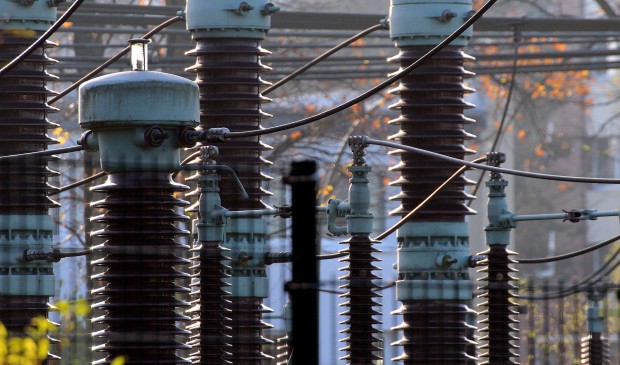Austin Energy committee considers new tariff
Friday, October 23, 2015 by
Tyler Whitson City Council appears to be moving closer to deciding how to charge Austin Energy’s two largest industrial customers, an issue it has grappled with since May. Convened as the Austin Energy Utility Oversight Committee, Council heard a presentation Thursday from utility staff on the proposed “P4” tariff, which would replace the long-term contracts that it extended in May.
Debbie Kimberly, Austin Energy’s vice president of customer energy solutions, emphasized that the tariff would apply only to a very small subset of utility customers.
“These are customers that have on-site substations and … in the case of the largest of the large customers – the P3 customers in particular – they operate at a very high load factor,” said Kimberly. Having a high load factor, she explained, means that customers “run constantly, 24/7, 365 days a year at the same level of demand.”
The only customers that currently meet the proposed P4 criteria are technology manufacturers Samsung and Freescale Semiconductor. Under the existing tariff structure, they fall within the P3 category, which applies to large primary voltage commercial customers, regardless of whether they have high load factors – or load factors above 85 percent.
The contracts for Samsung and Freescale Semiconductor will expire in November. Austin Energy staff proposed creating the P4 tariff – which would cover those two customers and any future customers that might fit the same criteria – as part of the city’s Fiscal Year 2015-16 budget. However, Council chose to hold off on that decision when it adopted the budget in September.
Kimberly said that the proposed P4 charges are based on the costs Austin Energy incurs in providing service to the customers. Those customers would sign nine-year contracts under the tariff, with possible adjustments every three years for a few charges and every year for the power supply adjustment, which pays for the fuel the utility uses to service those customers.
“It’s an advantage for the customer because there’s predictability in their prices; it’s an advantage for Austin Energy because there is predictability in terms of our revenue stream,” Kimberly said.
The major changes between the proposed P4 tariff and the existing P3 tariff, Kimberly explained, are the removal of seasonal charges, an increase in the monthly, fixed “customer charge,” and adjustments in the demand and energy charges so that they are slightly higher than the non-summer charge but lower than the summer charge.
“When those customers are operating at a high, constant load factor, there’s really no need for a seasonal difference in their charges,” said Kimberly.
In addition, the portion of the community benefits charge that goes toward the Customer Assistance Program – which provides discounts to low-income customers – would be capped at $200,000 annually per account, and the portions that go toward service area lighting and energy efficiency, demand response and solar programs would not exist in the P4 tariff.
Kimberly noted that, under their existing contracts, Samsung and Freescale Semiconductor do not contribute to the Customer Assistance Program, but they would under the proposed structure. While there is “some allowance” in the customers’ contracts for energy efficiency programs, she added, Austin Energy staff does not know the exact amount due to the ages of the contracts.
Since P4 customers would not be paying into energy efficiency, demand response or solar programs under the proposed tariff, they would not be eligible for energy efficiency rebates or incentives.
Mayor Pro Tem Kathie Tovo raised concerns about the proposal that P4 customers would not be contributing to those programs when other customer classes would.
“I need to understand why, since all of those others are rolling over and contributing to energy, why we are treating these two differently,” said Tovo. “Those others are contributing to energy efficiency, because that’s the rate structure.”
Kimberly responded. “These two customers, just as a function of their sheer size, would contribute significantly more into that tariff than they would ever be able to utilize,” she said. “So, part of the rationale here was premised on equity.”
While Tovo appeared to have more questions, the committee broke into an executive, or closed, session to further discuss the proposal. Council will likely take up the issue for a vote in the coming weeks.
You're a community leader
And we’re honored you look to us for serious, in-depth news. You know a strong community needs local and dedicated watchdog reporting. We’re here for you and that won’t change. Now will you take the powerful next step and support our nonprofit news organization?









